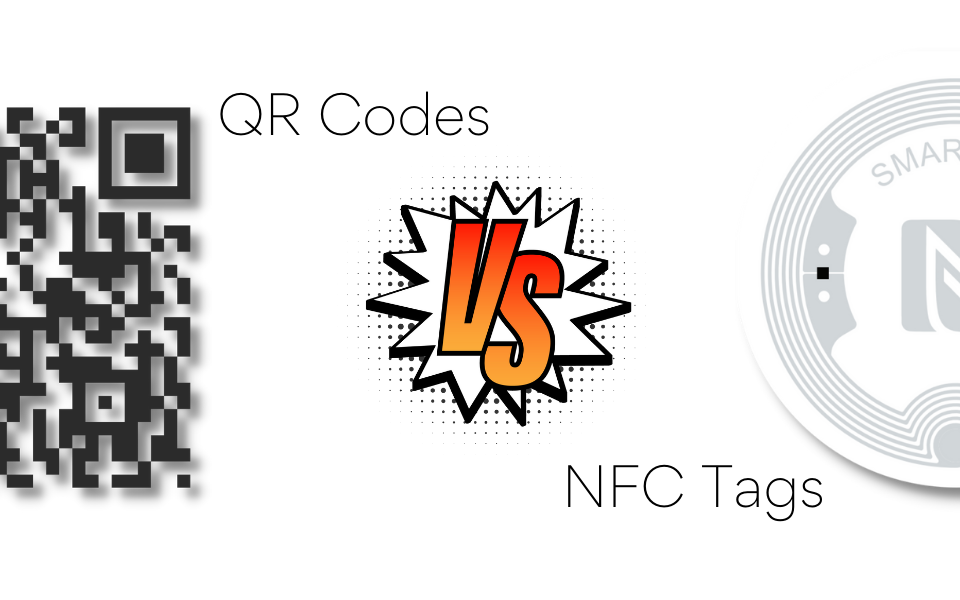
Cookies and Privacy
We use cookies to ensure that we give you the best experience on our website. To learn more, go to the Privacy Page
 General
General
However, these two technologies have different features and bring with them different opportunities and challenges that companies must know.

QR code stands for "Quick Response” code.
A QR code is a machine-readable code consisting of an array of black and white squares. It is a sort of evolution of the barcode. Just like that, it stores data and can be placed on any surface, such as labels, and flyers, but also on websites. The code may contain messages, photos, links to URLs, data, and information that can be accessed quickly and easily. Indeed, QR codes can easily be read by a smartphone camera.
They are already widely used in many industries such as automotive, retail, and healthcare. In the fashion industry, QR codes give consumers the chance to access more information about the product, such as origin, materials, or care instructions.

NFC stands for Near Field Communication and is an evolution of the best-known RFID technology. Both are wireless and contactless digital connectivity standards. However, NFC allows two devices to exchange data only when they are within a few centimeters of each other. This makes it possible to transmit even sensitive data securely and quickly, without a PIN or password. The security of the transfer is also due to the encryption that makes the data readable only to the devices involved.
In addition to the device-device exchange, NFC technology uses NFC Tags. These are programmable chips that contain the information to be exchanged. NFC tags can be read only by NFC-enabled smartphones or NFC readers.
They can be used for a variety of applications, such as contactless payment or event ticketing. In the fashion industry, just like QR codes, NFC tags can be used on products to give consumers more information about them, but also to unlock exclusive content, such as videos, discounts, or points for digital loyalty programs.
QR codes and NFC are two very popular technologies that have a lot of potential for businesses. For example, QR codes and NFC tags help companies to track customer behavior, deliver personalized content, and drive sales and loyalty.
As for marketing, these two tools have some advantages. They are:
It is possible that in the future NFC will replace QR codes, especially for marketing and communication purposes. Indeed, this technology has several advantages:
the QR code requires to be framed with precision, while the NFC only requires a close distance;
Nevertheless, NFC dominance still has some hurdles to overcome. First of all, diffusion: while all new smartphone and tablet devices are equipped with NFC, it is still a niche technology.
On the contrary, QR codes are less expensive and more widely available - every smartphone has a QR code reader.
Moreover, they can also be scanned from a distance. For example, people can easily scan from afar giant QRs on billboards.
In addition, QR codes allow the exchange of information without any direct contact between surfaces, avoiding contaminations. In other words, they are the most contactless solution possible.
Finally, unlike NFC, QR codes do not allow wiretapping, malicious redirects, and data manipulation.
The answer to this question is not easy: both technologies have pros and cons; both help the digital transformation of fashion brands.
Ultimately, the choice of QR code vs NFC tag depends on the specific needs of the brand. If a URL is all a company wants to share, a QR code is enough and there is no need to invest in NFC tags. However, if a fashion brand wants to offer its customers a more engaging and interactive experience, then NFC tags may be the better choice.
Other elements to consider when choosing are the type of company, the products, the objectives, the target audience, and the budget.